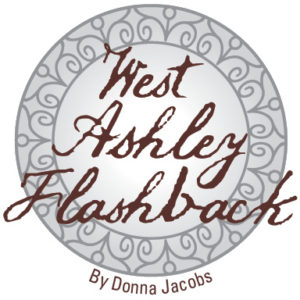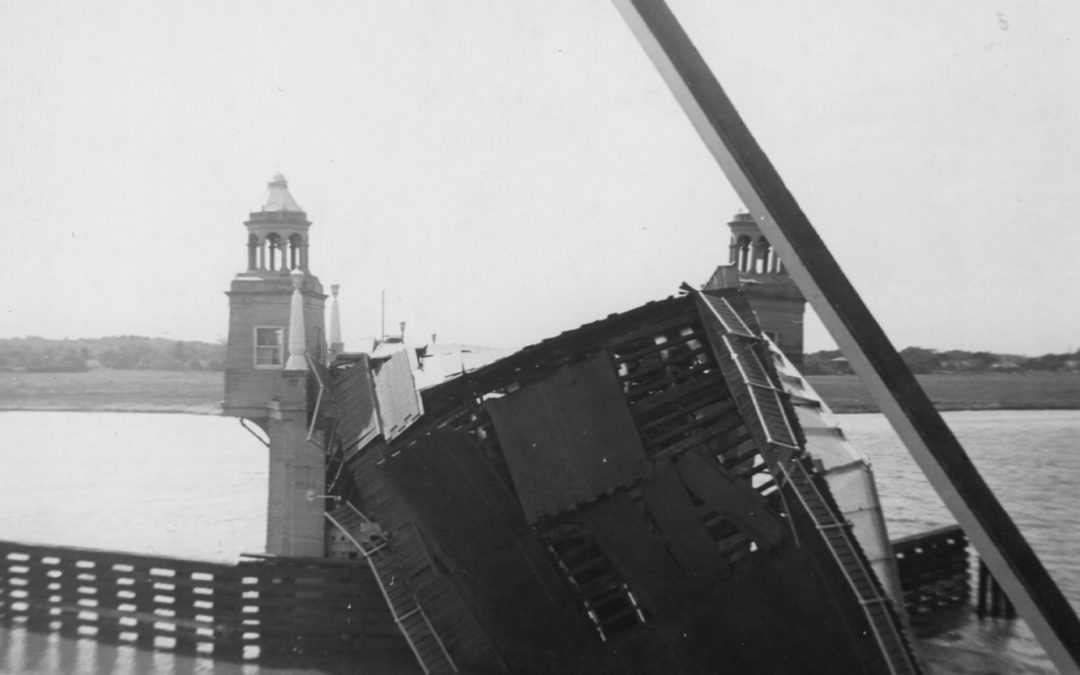Remembering the time a ship crashed into the Ashley River Bridge in 1955
 “It seemed to me it was going to be a pretty dull day as far as getting any news pictures was concerned. I didn’t have a single assignment for the day when I reported for work,” said Richard Burbage, who introduced his perspective under the headline: “Photographer Caught Crash Sequence” that ran on the front page of the Thursday October 6, 1955 edition of The News and Courier.
“It seemed to me it was going to be a pretty dull day as far as getting any news pictures was concerned. I didn’t have a single assignment for the day when I reported for work,” said Richard Burbage, who introduced his perspective under the headline: “Photographer Caught Crash Sequence” that ran on the front page of the Thursday October 6, 1955 edition of The News and Courier.
Burbage’s concern soon changed when he was asked on the morning of October 5, 1955 to document the ship Fort Fetterman as it negotiated the narrow opening in the Ashley River Bridge as it moved up river to the Kopper Company docks to deliver creosote. Burbage decided that a photographic view from the water would be much better than one from the shore. He was able to convince a boat owner working at the Municipal Yacht Basin that this would be a fun event to witness. His “pretty dull day” was going to turn very interesting a little after 9:30 a.m. that Wednesday morning.
It was around that time that the Fort Fetterman failed to negotiate the narrow opening and took out the west bascule span of the Ashley River Bridge “immediately blocking the state’s busiest traffic artery.” Burbage was there to get it all on film.
For the community West of the Ashley River this was quite a situation, in 1955 this was the only bridge for automobiles across the Ashley River. For the suburbanites who commuted by car to the peninsula or to the Naval Shipyard the travel distance and time had just gone from a few miles and a few minutes to 50 miles and close to two hours, unless you were fortunate to own a boat.
The Seaboard Airline Railroad would become a valuable commuting option in the days that followed, as would a ferry service from Wappoo Creek. Emergency responders were established in the Red Cross station at St. Andrew’s Parish Fire Department with a boat ambulance readied if needed.
Claude R McMillan, the chief highway commissioner, offered three remedies to get the traffic moving across the river: 1) place a Bailey Bridge across the opening; 2) build a detour around the damage; or 3) hurry up the completion of the new Ashley River Bridge (the one we now refer to as the North Bridge). The promise was made that repairs to the 77.5-foot gap would be made in two weeks and despite the hazards of around the clock work and a shortage of labor the bridge reopened to vehicular traffic on Tuesday, Oct. 18, 1955.
Humor had not failed the community during this stressful time, though. It was reported by Jack Leland, a staff writer for The News and Courier, that a couple of practical jokers had wanted to have a ship approach the bridge for opening just at the time that the repaired bridge was being opened again for traffic. Leland suggested that such a joke might have been met with a tar-and-feather party hosted by the commuters.
Five days after the crash an article entitled “Folks Won’t Take Ashley River Bridge For Granted Any More” ran in The News and Courier under the feature “Do You Know Your Charleston?” Tidbits about the World War II memorial bridge were shared in the article: 1) the bridge was dedicated on May 5, 1926; 2) cars had been using the bridge since January 1926; 3) the engineer for the bridge was James L. Parker; 4) construction costs was approximately $1,250,000; 4) the suburban growth in St. Andrew’s Parish was attributed to this bridge; 5) planned during Mayor Grace’s administration; 6) built during Mayor Stoney’s administration; 7) bridge span is 1733 feet; 8) Nine motors powered by a 150 horsepower generator lifted the Strauss bascule. The inconvenience caused by the destruction of the west span by the Fort Fetterman would reverberate for quite some time.
In addition to the logistics involved in not only repairing but also managing commutes and emergencies for the residents West of the Ashley River, a suit was filed in Federal court to determine exactly where the blame should be placed for the accident: “… attorneys for the Fort Fetterman contended the accident was partly caused by the bascule overhanging the fender system and extending out into the channel.” (The News and Courier -September 15, 1957) It would take until July of 1961 for all the legal matters surrounding this incident to be resolved.
Relief was on the way as the “new” Ashley Bridge (commonly referred to as the North Bridge) connecting St Andrew’s Parish with Cosgrove Avenue and the Naval Shipyard came into use in 1956. Although the bridge was not fully complete, all four lanes were opened to traffic in February of that year.
What are your bridge memories? Contact local author and West Ashley historian Donna Jacobs at westashleybook@gmail.com








